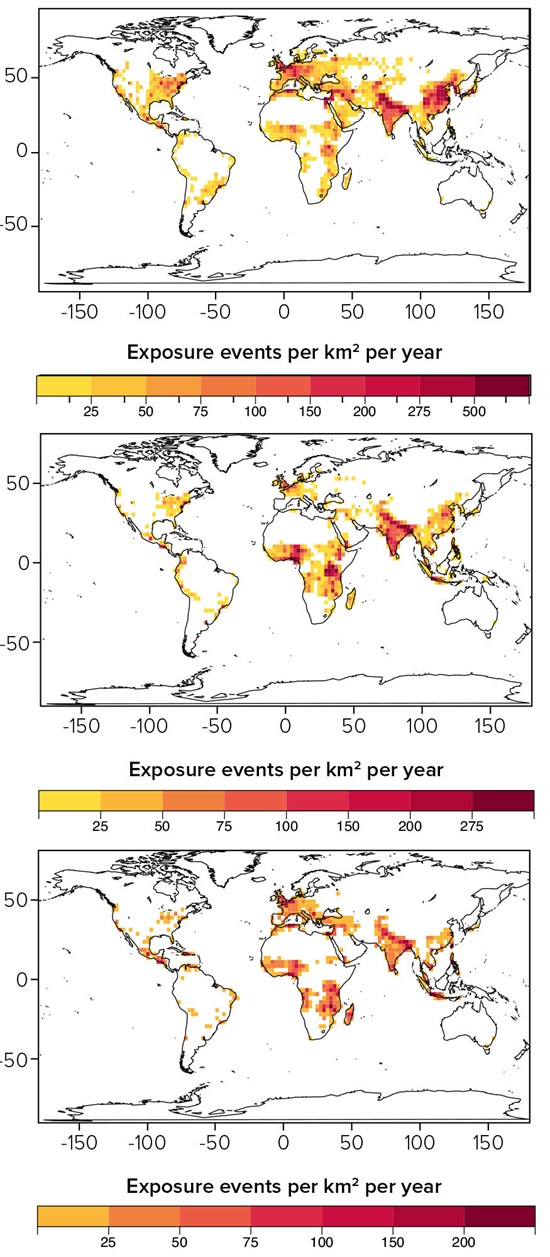
Climate change set to increase extreme weather risk to UK population
Robert McSweeney
11.27.14Robert McSweeney
27.11.2014 | 12:01amThe risk of heatwaves hitting the UK will increase ten-fold by 2100 if we don’t cut greenhouse gas emissions, according to a new study of how climate change will affect extreme weather.
The UK will also be more at risk from flooding and drought says the new report, published by the Royal Society. But the report also finds there are ways to prepare ourselves for what’s to come, with a mix of large-scale engineering and natural measures to adapt to climate change making it possible to manage some climate risks.
Rising risks
The study uses climate models to estimate how the frequency of floods, droughts and heatwaves will change worldwide by the end of the century. It assumes population rises to around nine billion globally by 2100, and overlays projections of population growth to map where in the world the most people will be at risk from extreme weather.
Perhaps unsurprisingly, places with high populations tend to have more people at risk from climate extremes. For the UK, the combined effects of climate and population changes will increase the risk of exposure to heatwaves by a factor of more than 10 by the end of the century, the report says.
If we don’t cut emissions, the risk of exposure to floods in the UK will increase four and a half times by the end of the century, and the risk of drought three times.
The risks posed by heatwaves grow particularly rapidly because older people who are more at risk from extreme heat will make up a larger chunk of global population by the end of the century, the report says.
The study produced maps which show how exposure to extreme weather will change. The areas of dark red show the greatest increase in people exposed to risk – in India, southeast Asia, parts of central Africa and western Europe.

Projected change in exposure to heatwaves (top), floods (middle) and droughts (bottom) by 2100 under business-as-usual climate change and a projected global population of around nine billion. Exposure is presented as number of exposure ‘events’ per square kilometer per year, where an ‘event’ is a person being affected by the extreme weather.
What can we do about it?
The maps may suggest a grim story of increasing extreme weather risks, but as Professor Georgina Mace, who chairs the working group for the report, puts it: “The good thing is, there are some solutions.”
Cutting emissions to limit temperature rise is perhaps the most obvious. The authors also look at different measures that could build ‘resilience’ to the impacts of extreme weather events, to become more prepared for extreme weather in the future.
Professor Mace describes resilience as ‘being able to do more than just cope with disastrous events’. The study recommends a mix of engineering-based and ecosystem-based solutions.
Engineering solutions, such as sea walls, dams or wells, are effective for particular hazards, but tend to be expensive and don’t offer wider benefits to a community.
Ecosystem-based approaches, such as restoring mangrove forests or wetlands, may not be as directly effective as limiting climate risks, but tend to be more affordable and offer additional benefits, such as providing habitats for wildlife.
Finance sector reform
The report also takes aim at the financial sector, saying it needs to start assessing the risks of extreme weather. The report recommends financial regulators require companies to report on how extreme weather could affect their profits and their ability to operate.
Between 1980 and 2004, for example, extreme weather caused around $1.4 trillion of damage, the report says. Requiring companies to report on their extreme weather risks would mean resilience was taken more seriously, the authors argue.
The alternative is to wait for companies to choose to adapt to climate impacts themselves, says Professor Mace, but “it will be at a huge cost, both financially and personally. Whereas getting these principles in place proactively will prevent these huge costs from happening.”
“A timely reminder”
Working group member Professor Peter Cox says “there has been a reluctance to talk about adaptation as it could be seen as an admission of failure on mitigation.” The report is a “timely reminder” for the need for adaptation to climate change, suggests Professor Mace, which can sometimes be overshadowed by the pressing need to mitigate carbon emissions.
But next year is crucial for action on adaptation as well as mitigation, the authors point out. The UN climate summit in Paris will discuss both, and 2015 also sees negotiations for a replacement to the Hyogo Framework for Action on disaster risk.
The Royal Society report draws attention to how extreme weather events already cause the loss of lives and livelihoods, and with climate and population change, managing these risks is only going to get more challenging.
Professor Cox concludes:

